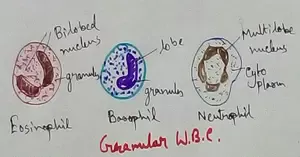Essay on Swami Vivekanand
Born as NarendranathDutta on 12th January, 1863 in an aristocratic Bengali Kayasth family of Calcutta, Swami Vivekanand felt a karmic connection to spirituality from an early age. Inspired by the faith of his mentor Swami Ramkrishna Paramhansa, he believed the road to the almighty can be best reached through service to mankind. As a practising Hindu monk, he spread the tenets of Hindu religion and Yoga and the philosophy of Vedanta in the West and gained new respect for Indian culture.
On his mentors’ demise, Swami Vivekanand took it upon himself to spread his teachings along the length and breadth of the country and even abroad in United States where he represented the parliament of World Religions in 1893, held in Chicago. His inspiring speech on the fundamental unity of all religion left an indelible impression in the Western world. He exhaustively campaigned and preached the tenets of Hindu philosophy in U.S, England and Europe. He was also responsible for disseminating the philosophy of traditional meditation and selfless service (Karmic Yoga).
Advanced as he was in his thoughts, he advocated actively for the emancipation for Indian women and an end to the excesses of the caste system. Such was the magnetism and charisma of this leader that some of the leading politicians, scientists, strategists, educationists and humanitarians in this country and world over have been inspired by his teachings and personality.
He was drawn towards the wandering ascetics from a tender age and his boundless curiosity and energy made him equip himself with the best in Western and Eastern philosophy. His teachers remarked on his prodigious memory and high intellect. Since his father followed the tenets of Brahmo Samaj, he too was initially drawn towards it but a chance encounter with Swami Ramkrishna Paramhansa in Dakshineshwar Kali temple left him spell bound. His rationality could not come to terms with the simplistic devotion of Swami Ramkrishna but his experiences proved him a worthy disciple and helping the poorest to gain education. This was a revolution in terms of Indian spirituality which so far believed in the path of detachment and renunciation. After the demise of Swami Ramkrishna, Vivekananda found a math/monastery in Belur, near Dakshineshwar and threw himself headlong into spiritual practices.
He led the austere life of a monk fending from day to day on alms and donations yet his inaugural speech in the World Parliament of Religions in 1893, caused seven thousand people from different nationalities to stand in ovation. He extolled his fellow peers of Ramakrishna Math to throw themselves into social work actively.. On his return to India in 1897, he became a force to reckon with for his revolutionary thoughts on caste system, education, status of women and old failed traditions. He was India’s clarion call for progress. He was largely responsible for the re-emergence of national pride and national fervor in a country enslaved by the British regime.
His failing health ultimately led to his demise on 4th July, 1902 but the inspiring leadership of this man has moulded generations on the path of righteousness and virtue and not surprisingly his birthday has been declared in India as the National Youth Day.
From Essay on Swami Vivekanand to HOME PAGE
Recent Articles
-
Formed Elements of Blood | Erythrocytes | ESR |Leukocytes |Neutrophils
Jan 15, 26 01:25 AM
Formed elements formed elements are constitute about 45 % of blood afeias haematocrit value packed cell volume mostly of red blood corpuscles and are of 3 types- erythrocytes, leukocytes and blood pla… -
What Is Plasma? | Blood Plasma | Proteins | Nutrients | Cholesterol
Nov 07, 25 10:29 AM
Blood is a mobile fluid which is a connective tissue and is derived from the mesoderm like cell any other connective tissue. Colour of blood is reddish and that flows inside the blood vessels by means… -
Disorders of Respiratory System | Tuberculosis | Pleurisy | Emphysema
Oct 28, 25 11:39 PM
Tuberculosis is very common disease and is caused by a type of bacteria called Mycobacterium tuberculosis. This disease causes different trouble in the respiration and infection of several parts of th… -
Regulation of Respiration | Respiratory Centres | Inspiratory Area |
Oct 14, 25 12:13 AM
Respiratory Centre is the area that controls the rate of respiration and it is observed to be located in medulla oblongata and pons. Respiratory Centre has the following will dispersed components like… -
Explain Transport of Gases | External Respiration | Tissue Respiration
Oct 09, 25 11:35 PM
In humans gaseous exchange is completed in the following ways the steps are - External Respiration or Breathing - Breathing in false taking in of Oxygen and giving out of carbon dioxide in the body. M…





New! Comments
Have your say about what you just read! Leave me a comment in the box below.